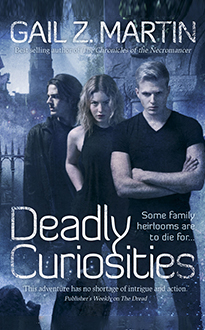 1. What is the title of your newest book or short story? What’s it about? Where can readers find it?
1. What is the title of your newest book or short story? What’s it about? Where can readers find it?
My latest novel is the 5th in the Adventures of Sinbad series, from Double Dragon Publishing It’s called Sinbad’s War, and, just as the title indicates, the galaxy’s once more at war. This time, however, instead of being a child in a war-torn galaxy, Sinbad’s a man fighting in one. He has more reason than most to win this war, for his home planet is attacked, his wife and infant daughter killed and his son Adam’s wife is carried off by the invaders, along with many other women on the planet. Sin, his sons, and his grandson enlist and are soon in the middle of the battle.
2. How did you choose to become a writer?
I don’t think anyone chooses to become a writer. It’s inborn, like being able to play the piano. You have the ability, you just need to cultivate and develop it.
3. What’s your favorite part of writing a new book or story? What do you like the least?
There are always some scenes that seem to flow better than others. Usually I find the most emotional ones work well. Don’t know why. Perhaps it’s because I’ve lived through so much emotion I can channel it onto paper better.
4. What inspired your new book or story?
It was a natural progress. Unlike some series where the characters appear to stay the same age and everything occurring would theoretically have to happen in very condensed circumstances to fit in, Sin starts out as a very young, unencumbered smuggler and progresses to a much older shipping magnate and grandfather. It was only natural that, since he lives in the galaxy governed by the United Terran Federation (and we all know how belligerent those Terrans are) sooner or later, he, and the galaxy, would be involved in a war of some kind. So I decided to show how that war would affect him and his family.
5. How do you research your stories?
When I’m writing one of my “medieval fantasies,” or sword and sorcery as they used to be called, I do a lot of delving into lives, history, and customs in the years 1000-1400. Then I adjust what I’ve read accordingly to whatever locale and people I’m writing about. Most of what I use is based on fact in one way or another. I try to keep actual dates accurate, as well as spellings, and be as realistic as possible down to the smallest detail.
6. Where can readers find you on social media? (Facebook, Twitter, Goodreads, Library Thing, Redd It, etc.)
BUY LINK FOR SINBAD’S WAR: https://www.double-dragon-ebooks.com/single.php?ISBN=1-77115-089-0
URL: https://www.tonivsweeney.com/
Goodreads: https://https://www.goodreads.com/search?utf8=%E2%9C%93&query=Toni+V+Sweeney
MySpace: https://https://www.myspace.com/tvsweeneyhttps://https://www.myspace.com/tvsweeney
Facebook: https://https://www.facebook.com/tvsweeneyhttps://https://www.facebook.com/tvsweeney
Amazon: https://https://www.amazon.com/Toni-V.-Sweeney/e/B002BLQBB8/ref=sr_tc_2_0?qid=1365694962&sr=1-2-enthttps://https://www.amazon.com/Toni-V.-Sweeney/e/B002BLQBB8/ref=sr_tc_2_0?qid=1365694962&sr=1-2-ent
Twitter: @tonivsweeney
Author Database: https://https://authorsdb.com/authors-directory/2030-toni-v-sweeneyhttps://https://authorsdb.com/authors-directory/2030-toni-v-sweeney
Ask David: https://https://askdavid.com/search/Toni-V.-Sweeneyhttps://https://askdavid.com/search/Toni-V.-Sweeney
Youtube: https://https://www.youtube.com/user/tvsweeney?feature=mhee
7. Who are your favorite fictional characters—your own, and from other books, TV shows and movies?
Mine: Sinbad (The Adventures of Sinbad) and Aric kan Ingan (The kan Ingan Archives)
Other books: Harry Dresden (The Dresden Files); Eve Dallas and Roarke (The In Death series)
TV: Richard Castle (Castle)
8. What do you read for fun?
I like Regency romances, mysteries, and paranormal novels.
9. Was there a book you read in your childhood or teen years that changed your world? Tell us which book and how it made a difference for you.
I read so many books as a child I can’t select just one! I got a library card when I was seven and I’m 70 now, so that’s a lot of reading material and time.
10. What advice would you give to an aspiring writer?
Don’t talk about it, do it! If you’ve been wanting to write that novel, get it out of your head and into the computer or on paper or somewhere tangible…then take it from there.













